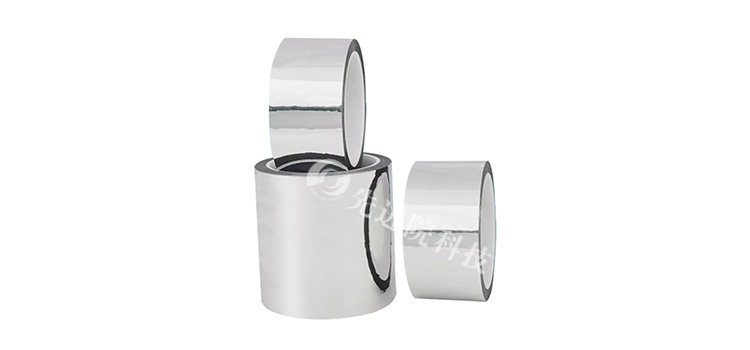Copper foil tin platingThe production process flow:
1. Embryo making: Adding varying amounts of zinc blocks to scrap copper materials according to predetermined production targets to produce copper raw materials of different specifications.
2. Assay: In order to ensure the production of qualified and economically efficient finished products, the accuracy of assay results is particularly important. The responsibility of the laboratory is to quickly and accurately inform the furnace master of the test results based on the submitted copper blocks.
3. Cutting: The complete copper strip is pulled by a hanging rope and placed steadily on a dedicated cutting table. It is then cut by a cutting wheel saw, and the uneven surface of the copper strip is polished smooth by a copper strip washing machine. This is beneficial for the flatness and smoothness of the copper strip surface processed later.
4. Hot rolling: The cut copper strip is heated at a high temperature of 1000 ℃ and then hot-rolled to form a copper strip with a thickness of about 2.3cm.
5. Water washing: After the initial rolling step, each copper block must undergo a sealing furnace and water washing process again to avoid affecting the quality of the finished product due to the presence of surface impurities. The washing area is divided into two types of water tanks according to their acidity. The high concentration is 6-8 degrees, while the low concentration is 3-5 degrees. The medium red spots on the surface of the copper rod and copper strip can be washed away by the acid solution in the washing pool, while the dark red spots are removed by the iron fine bristles during the washing process. After this series of treatments, the copper strip clearly shines with the inherent luster of copper itself. If there are still red spots and patches during the rolling process, it is necessary to repeat the water washing step. During the washing process, it is necessary to regularly check the acidity in the water tank and add acid in a timely manner to prevent insufficient washing due to low acid content.
6. Rolling: The rolling area is divided into initial rolling of 180 and intermediate rolling of 110 according to the wheel and roll classification. According to the different sizes of various rollers, the copper strip that has been hot-rolled and calcined in a sealed furnace is processed from rough to fine through the above two steps.
Copper foil tin platingCharacteristics of production methods:
1. Cold rolled copper foil
(1) Plastic deformation.
(2) The pressure in the roller gap area is high and there is pressure distribution, with a maximum of 2700MPa.
(3) There is frictional force along both the rolling direction and the reverse rolling direction.
(4) The instantaneous temperature of the roller gap is high, reaching 200-300 ℃.
(5) Rolling and sliding states coexist.
2. Copper strip hot rolling
Advantages of copper strip hot rolling:
(1) Hot rolling can significantly reduce energy consumption and lower costs. During hot rolling, the metal has high plasticity and low deformation resistance, greatly reducing the energy consumption of the hot rolling process for metal deformation.
(2) Hot rolling can improve the processing performance of metals and alloys by crushing coarse grains in the cast state, significantly healing cracks, reducing or eliminating casting defects, transforming the cast structure into a deformed structure, and improving the processing performance of alloys.
(3) Hot rolling usually uses large ingots and large reduction rolling, which not only improves production efficiency, but also improves rolling speed and achieves rolling
Solution to common problems with copper strips:

Copper foil tin platingSolution to discoloration
(1) Control the concentration of acid solution during acid washing. In the case of washing away the oxide layer on the surface of annealed copper strip, a high acid concentration is meaningless. On the contrary, if the concentration is too high, the residual acid attached to the surface of the copper strip is difficult to wash off and accelerates the pollution of the cleaning water, resulting in a high concentration of residual acid in the cleaning water and making the cleaned copper strip more prone to discoloration. Therefore, when determining the concentration of the pickling solution, the principle should be followed: while the oxide layer on the surface of the copper strip can be cleaned off, the concentration should be minimized as much as possible.
(2) Control the conductivity of pure water. Control the conductivity of pure water, that is, control the content of harmful substances such as chloride ions in pure water. It is generally safer to control the conductivity below 50 μ S/cm.
(3) Control the conductivity of hot cleaning water and passivating agents. The increase in conductivity of hot cleaning water and passivating agents mainly comes from the residual acid brought in by the running copper strip. Therefore, while ensuring the quality of pure water used for cleaning, controlling the conductivity is also controlling the amount of residual acid. According to multiple experiments, it is safe to control the conductivity of hot cleaning water and passivating agent below 200 μ S/cm.
(4) Ensure that the copper strip is dry. Partial closure is carried out at the outlet of the air cushion furnace winding, and dehumidifiers and air conditioners are used in the local closure device to control the humidity and temperature of the copper strip winding within a certain range.
(5) Use passivating agents to passivate. Nowadays, most copper processing plants use benzotriazole, also known as BTA (molecular formula: C6H5N3), as a passivator. Practice has proven that it is a convenient, economical, and practical passivating agent. When the copper strip passes through the BTA solution, the surface oxide film reacts with BTA to form a dense complex, which protects the copper substrate.





